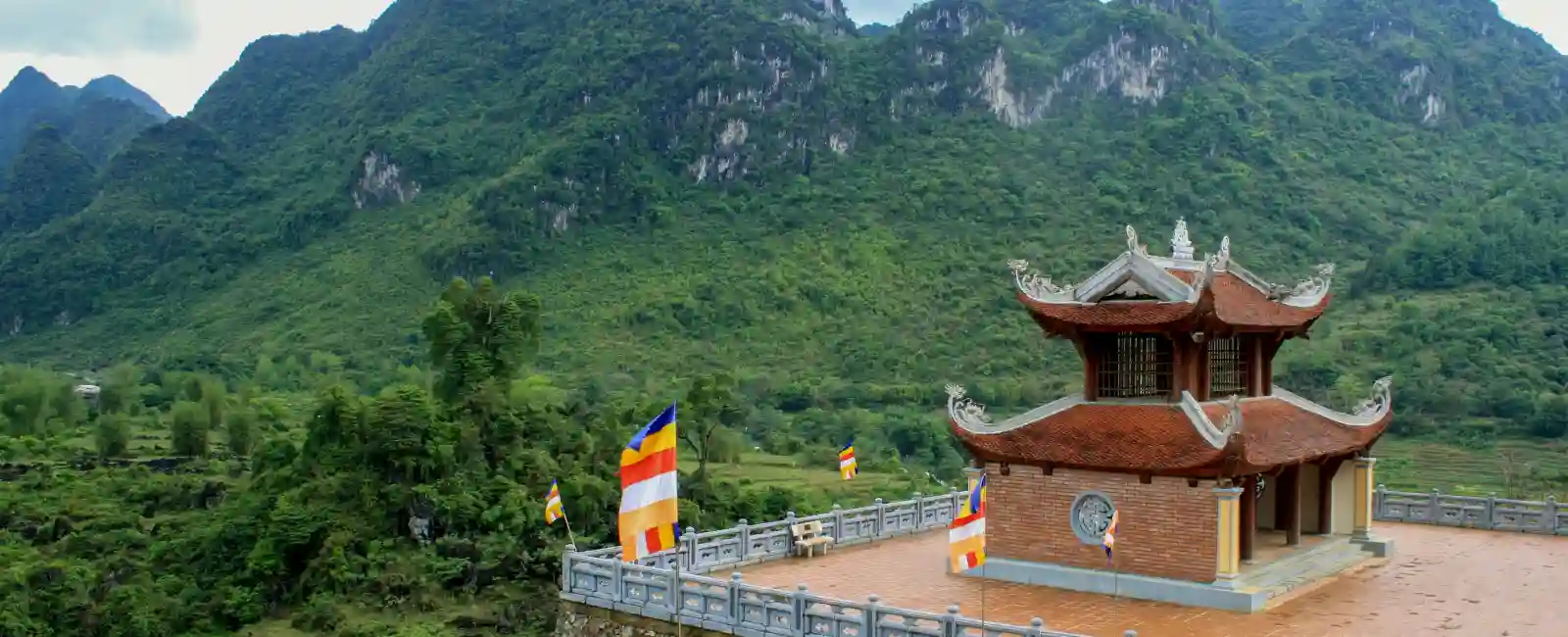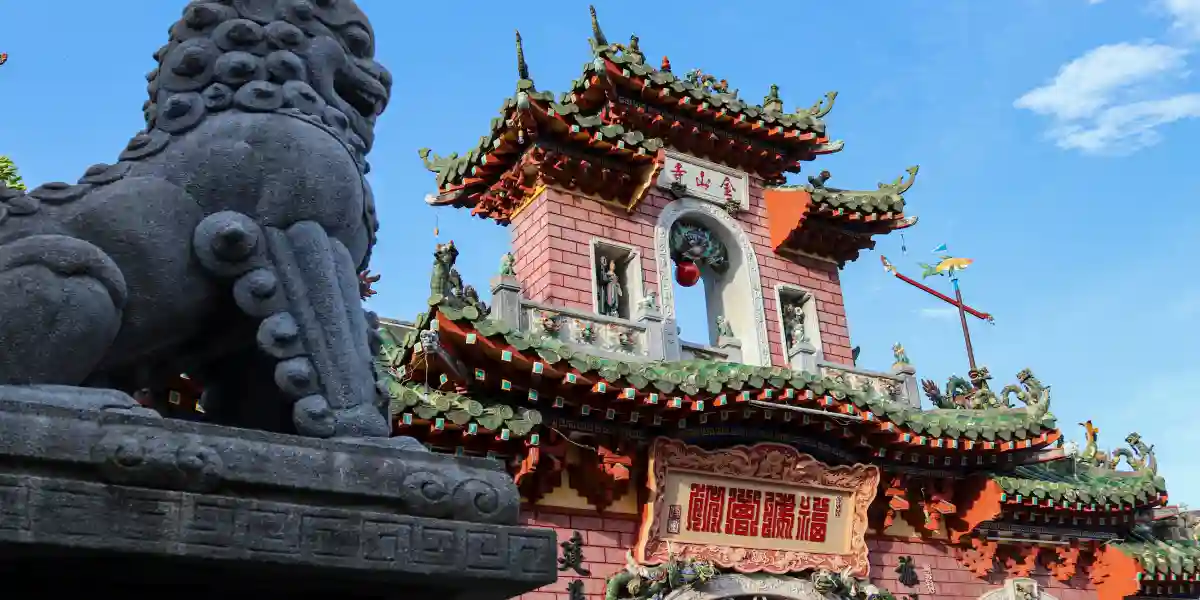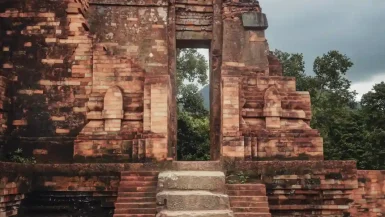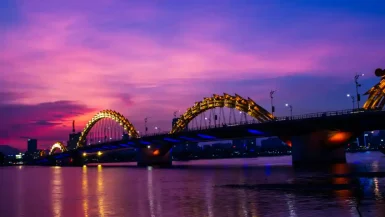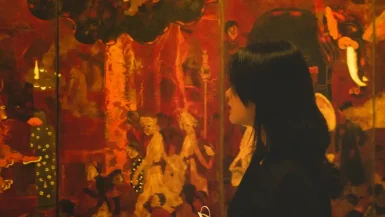Vietnam boasts a rich tapestry of cultural heritage and history. This Southeast Asian gem is home to countless temples and pagodas, each reflecting the nation’s deep-rooted spiritual traditions and architectural brilliance. The harmonious blend of natural beauty and human craftsmanship makes these sites truly unique. In this article, we embark on an immersive journey through Vietnam’s most iconic and breathtaking temples and pagodas. Along the way, we will uncover their historical significance, architectural wonders, and cultural relevance. Travelers and pilgrims from around the world are drawn to these sacred places. Each visit offers a glimpse into Vietnam’s soul. Whether nestled in bustling cities or serene countryside, these temples and pagodas hold stories waiting to be told. Join us as we explore the pagodas and temples of Vietnam.
The Majestic Pagoda of One Pilla
We start our journey in Hanoi, the capital city. Here lies the Pagoda of One Pillar, an iconic symbol of Vietnamese architecture and history. Emperor Ly Thai Tong built this pagoda in 1049 after dreaming of a visit from the Goddess of Mercy. He dreamt that she handed him a son while seated on a lotus. Inspired by this dream, he constructed the Pagoda of One Pillar to resemble a lotus blossom.
The pagoda’s design stands out. Perched on a single stone pillar, it creates the illusion of a lotus blooming from the water. This unique structure exemplifies Vietnamese architectural ingenuity. Despite its destruction by French forces in 1954, the pagoda was reconstructed to its former glory. Today, it remains a popular pilgrimage site and tourist attraction. Visitors are often struck by the peaceful atmosphere surrounding the pagoda. The lush gardens and tranquil pond enhance its serene beauty. Many locals come here to pray and find solace. The pagoda also hosts various cultural and religious events throughout the year. Its historical significance and architectural beauty make it a must-visit destination in Hanoi.
The Sacred Temple of Literature
Next, we move to another gem in Hanoi – the Temple of Literature. This ancient temple holds great significance in Vietnamese culture. Built in 1070, it honors Confucius and serves as Vietnam’s first national university. The temple’s tranquil grounds offer a serene escape from Hanoi’s bustling streets.
The Temple of Literature features several courtyards, each adorned with beautiful gardens and ancient trees. The most notable structure is the Khue Van Pavilion, an architectural masterpiece. Students and scholars often visit this temple to seek inspiration and pay homage to Confucius. The temple also hosts the annual Tet celebration, drawing large crowds and festive activities.
Beyond its beauty, the Temple of Literature represents Vietnam’s commitment to education and scholarly excellence. Each stone stele, bearing the names of successful doctoral candidates, tells a story of dedication and achievement. Walking through the temple, visitors can feel the weight of history and the reverence for learning. The Well of Heavenly Clarity, located within the complex, symbolizes purity and wisdom. The temple also houses several statues and altars dedicated to Confucius and his disciples. Throughout the year, traditional music performances and cultural events bring the temple to life. The Temple of Literature is not just a historical site but a living testament to Vietnam’s enduring respect for knowledge and culture.
In exploring the pagodas and temples of Vietnam, the Temple of Literature stands out as a beacon of the nation’s intellectual and cultural heritage.
The Timeless Perfume Pagoda
A short drive from Hanoi leads us to the Perfume Pagoda, a complex of Buddhist temples and shrines. Nestled in the Huong Tich mountains, this sacred site attracts thousands of pilgrims each year. The journey to the pagoda itself is an adventure. Visitors take a boat ride along the scenic Yen Stream, followed by a hike or cable car ride up the mountain.
The Perfume Pagoda’s main attraction is the Huong Tich Cave, also known as the “Inner Temple.” This cave houses a beautiful pagoda and numerous Buddha statues. Pilgrims believe that visiting the Perfume Pagoda brings good fortune and spiritual enlightenment. The annual Perfume Pagoda Festival, held during the first three months of the lunar year, is a significant cultural event, drawing visitors from across the country.
The Historic My Son Sanctuary
Our journey continues to Central Vietnam, where the My Son Sanctuary awaits. This UNESCO World Heritage Site showcases the remnants of the ancient Champa civilization. Built between the 4th and 14th centuries, My Son served as a religious center dedicated to Hindu deities, particularly Shiva.
The complex comprises numerous temples and towers, each intricately carved with Hindu motifs and symbols. Despite the ravages of time and war, My Son’s ruins retain their grandeur and mystique. Archaeologists and historians continue to study these ruins to unravel the mysteries of the Champa civilization. A visit to My Son offers a glimpse into Vietnam’s ancient past and its cultural connections with India. Exploring the pagodas and temples of Vietnam, especially My Son, reveals the deep spiritual and historical roots of the country.
The Enchanting Hoi An Ancient Town
We then travel to Hoi An, a picturesque town renowned for its well-preserved architecture and vibrant cultural heritage. Hoi An’s ancient town, a UNESCO World Heritage Site, features numerous temples and pagodas that reflect its diverse cultural influences.
One of the most notable temples in Hoi An is the Quan Cong Temple. Built in 1653, this temple honors Quan Cong, a revered Chinese general known for his loyalty and integrity. The temple’s intricate woodwork, colorful altars, and detailed sculptures captivate visitors. Another must-visit site is the Japanese Covered Bridge, a unique structure with a small temple inside. This bridge symbolizes Hoi An’s historical connections with Japanese merchants.
The Tranquil Linh Phuoc Pagoda
Our exploration takes us to Da Lat, a charming hill station in the Central Highlands. Here, we find the Linh Phuoc Pagoda, a stunning example of Vietnamese Buddhist architecture. Also known as the “Ve Chai Pagoda,” it features intricate mosaics made from broken glass and porcelain.
The pagoda’s seven-story tower stands as one of its most striking features. Inside, visitors find numerous statues of Buddha, each meticulously crafted and beautifully adorned. The Linh Phuoc Pagoda also houses a fascinating collection of religious artifacts and artworks. The serene atmosphere and breathtaking artistry make it a must-visit destination for spiritual seekers and art enthusiasts alike.
Additionally, the pagoda’s bell tower holds the largest bell in Da Lat, which weighs over eight tons. Each level of the tower offers panoramic views of the surrounding landscape, making it a popular spot for photography. Visitors can also explore the subterranean complex, which features a captivating dragon sculpture winding through the cave-like corridors. The walls of the pagoda are adorned with detailed murals depicting scenes from Buddhist lore, adding to the visual splendor. The lush gardens surrounding the pagoda provide a tranquil space for meditation and reflection. Local guides often share stories and legends associated with the pagoda, enriching the visitor experience. Linh Phuoc Pagoda is not only a place of worship but also a testament to the artistic and spiritual heritage of Vietnam.
The Grandiose Thien Mu Pagoda
Next, we head to Hue, the former imperial capital of Vietnam. Hue boasts many historic sites, including the grand Thien Mu Pagoda, one of the most famous pagodas and temples of Vietnam. Perched on Ha Khe Hill, overlooking the Perfume River, this pagoda offers stunning views and a peaceful ambiance.
Built in 1601, Thien Mu Pagoda is one of Vietnam’s oldest and most revered religious sites. The seven-story Phuoc Duyen Tower is the pagoda’s most recognizable feature. Visitors can also explore the pagoda’s beautiful gardens, shrines, and the historic Austin car, which transported the monk Thich Quang Duc to his self-immolation in 1963. This act of protest against the South Vietnamese government remains etched in history.
The Spiritual Cao Dai Temple
In the southern part of Vietnam, we find the Cao Dai Temple, a unique religious site in Tay Ninh. This temple serves as the Holy See of the Cao Dai religion, an indigenous faith that blends elements of Buddhism, Taoism, Confucianism, and Christianity.
The Cao Dai Temple’s architecture is as eclectic as its religious beliefs. The colorful façade features dragons, lotus flowers, and other symbolic motifs. Inside, the temple’s vibrant decorations and elaborate altars create a mesmerizing visual experience. Visitors can witness daily prayer sessions, where adherents dressed in white robes chant and perform rituals. The Cao Dai Temple offers a fascinating insight into one of Vietnam’s most intriguing spiritual traditions.
The Revered Jade Emperor Pagoda
We now venture to Ho Chi Minh City, where the Jade Emperor Pagoda awaits. Also known as the Tortoise Pagoda, this temple is dedicated to the Jade Emperor, the supreme Taoist god. Built in 1909 by the city’s Chinese community, the pagoda showcases a blend of Taoist and Buddhist elements.
The Jade Emperor Pagoda features intricate wood carvings, statues, and altars adorned with offerings. The main hall houses the Jade Emperor’s statue, surrounded by guardians and deities. The temple’s tranquil courtyard, with its koi pond and turtle sanctuary, offers a peaceful retreat from the city’s hustle and bustle. Locals and tourists alike visit the Jade Emperor Pagoda to seek blessings and immerse themselves in its spiritual ambiance.
The Serene Vinh Nghiem Pagoda
Our final stop is the Vinh Nghiem Pagoda, one of the largest and most important temples in Ho Chi Minh City. Built in the 1960s, this pagoda draws inspiration from traditional Vietnamese and modern Japanese architecture.
The Vinh Nghiem Pagoda’s seven-story tower, the Quan Am Cac, is its most prominent feature. Inside, visitors find numerous statues of Buddha and bodhisattvas, each exquisitely crafted. The pagoda also serves as a center for Buddhist education and cultural activities. Its serene gardens and meditation halls provide a tranquil space for reflection and spiritual practice. The pagoda also hosts various festivals and ceremonies, attracting large crowds throughout the year. The vibrant Lunar New Year celebrations here are especially noteworthy, filled with colorful decorations and joyous activities. Additionally, the Vinh Nghiem Pagoda runs charitable programs, offering support to the local community. Visitors often leave with a deep sense of peace and a greater understanding of Vietnamese Buddhist traditions. Exploring the pagodas and temples of Vietnam is truly a journey through the nation’s spiritual heart.
Conclusion
Vietnam’s temples and pagodas offer a profound insight into the country’s rich cultural and spiritual heritage. Each site, from the iconic Pagoda of One Pillar to the grand Vinh Nghiem Pagoda, tells a unique story of faith, history, and architectural brilliance. These sacred sites are more than just tourist attractions; they are living embodiments of Vietnam’s enduring traditions and beliefs.
As we conclude our journey, we reflect on the timeless beauty and spiritual significance of these temples and pagodas. Whether you are a history enthusiast, an architecture lover, or a spiritual seeker, Vietnam’s sacred sites promise an unforgettable and enriching experience. So, pack your bags and embark on your own journey to explore the pagodas and temples of Vietnam – a land where history, culture, and spirituality converge in harmony.
